Gardening has been an important hobby of mine for about a dozen years and a newish teaching/service interest (check out Merrimack_Garden on Instagram). Gardening provided a sense of peace, food, and all-ages activities when I was a new mom. I’ve needed gardening more than ever during quarantine to give me something meaningful to sink my hands into. Judging by the worldwide gardening boom, I suspect many folks are feeling the same way. The tangible, delicious results and the beauty of gardening are all big motivators.
This is the second of three new blog posts about growing or nurturing food at home (or in whatever space is available–community garden, empty lot, agreeable friend’s yard). The previous post is about getting started with a home garden; the others are about maximizing and diversifying what you grow. This post covers edible perennials (plants that come back year after year) that are a great deal–low cost, low maintenance, and high yield. The line-up includes strawberries, raspberries, blackberries, asparagus, and rhubarb.
Strawberries: Home-grown strawberries taste so much better than store-bought berries. They’re usually smaller with much more flavor. These are absolutely worth the cost of bare-root plants ($15-$20 for 25 bare root plants). I always order mine by mail to have a wider selection.
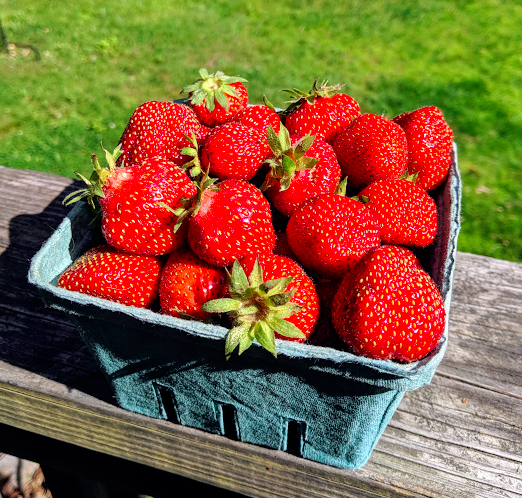
If you make sure to give them a lot of sun, strawberry bare root plants are otherwise not too picky about growing conditions. However, they do require some care with weeding. They spread by runners, and it’s easy to get weeds tangled in there. The work is totally worth it though.
I have grown June-bearing strawberries Honeoye, Sparkle, and All Star. Honeoye is the favorite, but the others are delicious, too. I also added in everbearing strawberries (that fruit throughout the summer until the first frost) to keep the strawberry bed productive for more time.
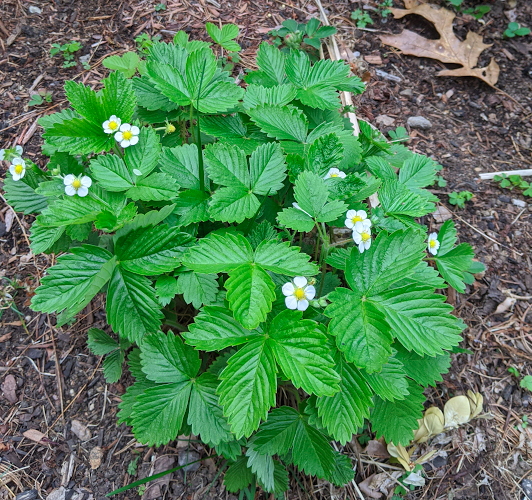
We also grow small Alpine strawberries as a ground cover–to keep down the weeds, provide bee forage, and to entertain the kids with the tiny, sweet berries. I started those plants from inexpensive seeds. They are easy to grow and happy in the shade.
Black Raspberries, Red Raspberries, Blackberries: I’m putting them all together to highlight the similarities (but we all know that black raspberries are the superior berry). These are inexpensive, easy care, and productive plants (in most conditions).
I bought 6 red raspberry and 6 black raspberry bare root plants from Stark Brothers (my favorite supplier) in 2017. Each 3 pack was $15. These black raspberries (Jewel, Allen, and others) are bigger and less seedy than the natives you see growing on the sides of trails and roads. Our berry bramble in New York (started from 3 Stark Brothers/Miller Nursery plants back in 2010) was amazingly productive. (See the evidence below.)
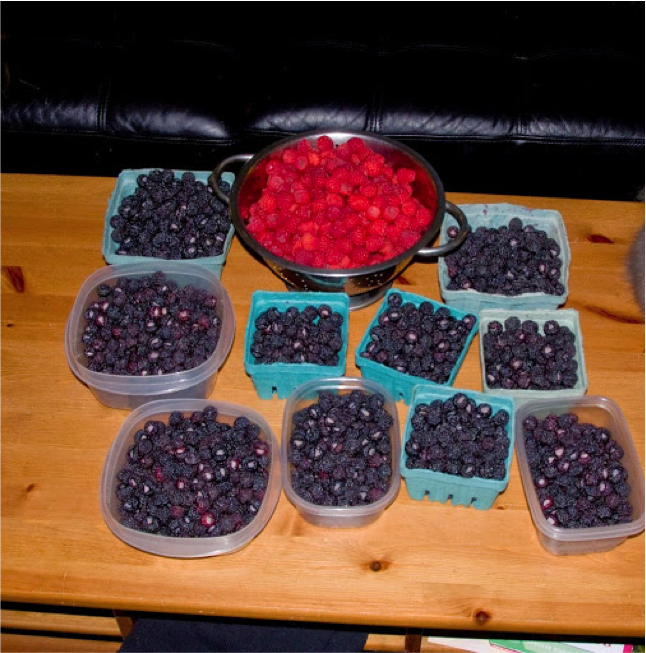
For our new home in New Hampshire, I selected everbearing red raspberries that produce two crops–the first in July and the second in September when no other berries are ripening. The kids just stand outside and snack on them after the bus drops them off.
The care (of raspberries, not kids) is quite easy. I don’t even weed the raspberries now that they’re established. Red varieties do best with a t-trellis for support.
I planted thornless Chester blackberries last year. (Unlike the black raspberries, these ones don’t have the hollow cap). They’re honestly not my favorite taste when I’ve eaten them in the wild or from the grocery store– but home-grown cultivars could taste even better. I had space around a peach tree and figured I’d give these a try. The verdict is still out on their productivity, but I’m optimistic.
Rhubarb: Rhubarb is productive and easy to grow. It’s also fantastic to have an early harvest (starting in mid-May). These are great in pies, jams, crumbles, compotes, and mixed drinks (using a rhubarb-flavored simple syrup). They are inexpensive plants to get at garden centers–or ask a friend with a healthy rhubarb patch to give you a division.
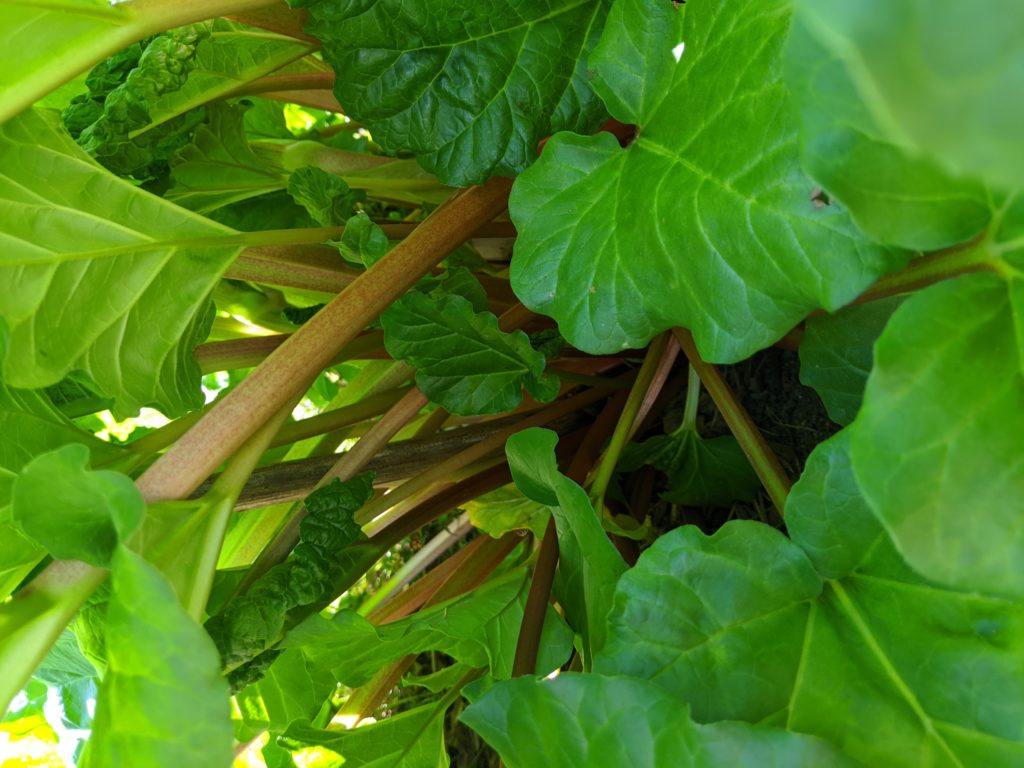
Asparagus: Asparagus is in the same league as rhubarb: it’s cost effective, easy to grow, and an early spring delight. I bought two 10 packs of asparagus crowns a few years ago for $15 each pack (again from Stark Brothers). They need a year to grow into ferns and add strength to the plant roots before being harvested. Purple passion and Jersey Giant are producing well now, providing two or three side dishes per week. These are a great value. The plants will live for up to 20 years with proper care.
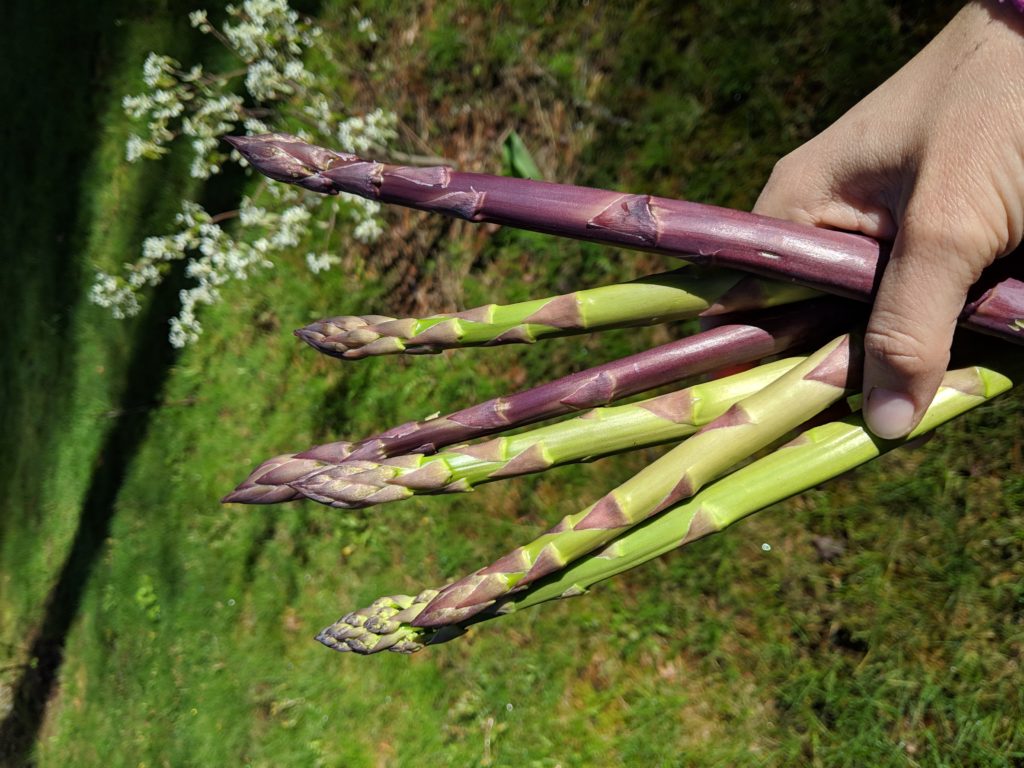
Summary: The plants described here take little care and are a great investment. With the pandemic gardening boom, many mail-order companies are out of certain strawberry and raspberry varieties (as of May 2020)–but keep searching. You might also see if friends have any divisions to share.
It’s also a great idea to prepare a new garden bed in the summer that can be planted in the fall (when more plant stock becomes available). If you’re starting a new bed, the lasagna method (or a simpler version of it) will save your back and keep the worms happy in the soil. Try laying cardboard over grass at your new garden site, and top it with dirt, compost, shredded leaves, grass clippings, etc. Give it some water now and again. The layers will decompose and kill the grass over the summer so you’ll be read to plant in the fall.



I don’t think the title of your article matches the content lol. Just kidding, mainly because I had some doubts after reading the article.
Very great post. I just stumbled upon your blog and wished to mention that I have really loved surfing around your blog posts. In any case I抣l be subscribing in your feed and I’m hoping you write again very soon!
Thank you for the auspicious writeup. It if truth be told was once a entertainment account it. Look complex to more brought agreeable from you! By the way, how can we communicate?